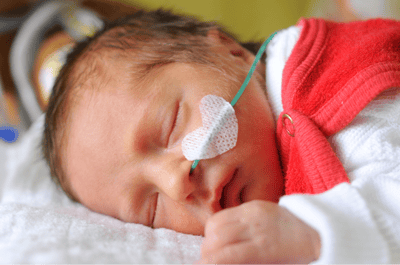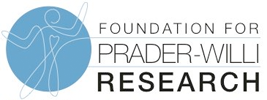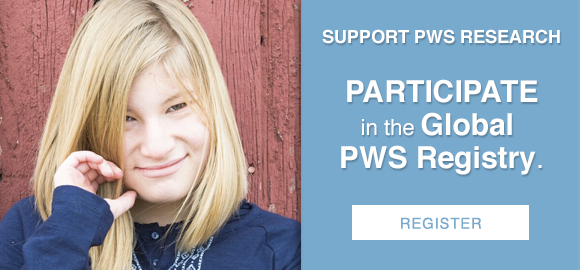Insights into how feeding tubes are used in infants with PWS—and the complications families may encounter—have emerged from the “Feeding Tube Survey” completed by nearly 350 families in the Global PWS Registry. By analyzing these responses, Drs. Sani Roy, Ann Scheimann, Lusine Ambartsumyan, Samson Cantu, and Jessica Duis, along with colleagues Deborah Rafferty, Amy Trejo, Luke Hamilton, and FPWR team members Jessica Bohonowych and Theresa Strong, identified key patterns in feeding tube practices and the challenges that can arise. These findings are now published in the American Journal of Medical Genetics under the title Feeding tube use and complications in Prader-Willi syndrome: Data from the Global PWS Registry.

Why are Feeding Tubes Common in PWS Infants?
Babies with PWS typically don’t have a strong and coordinated ‘suck and swallow’ response, so feeding tubes are often used to ensure that the baby gets enough nutrition to grow appropriately. Feeding tubes can also reduce the risk of aspiration events (liquid going ‘down the wrong pipe’ into the lungs). This study looked at the different kinds of feeding tubes that have been used in babies with PWS, how satisfied parents were with their use, and what kinds of complications occurred with different feeding tubes.
What Types of Feeding Tubes are Used in Babies with PWS?
Most parents (77%) reported that their child used some form of feeding tube during infancy. The breakdown included:
-
NG tubes only (70%) – A nasogastric tube inserted through the nose into the stomach
-
G tubes only (5%) – A gastrostomy tube surgically placed directly into the stomach
-
Both NG and G tubes (25%)
Regardless of tube type, more than 75% of parents felt that the use of the feeding tube had a positive impact on the quality of life (as anyone who has spent hours trying to get a sleepy baby with PWS to finish a bottle can probably appreciate). However, there were some important differences in why tubes were placed, the length of use, and the rate of complications between NG and G tubes in this sample.
While both NG and G tubes were commonly placed due to feeding difficulties or poor weight gain, G tubes were more often used when aspiration was a concern.
Duration of use also differed:
-
NG tubes were typically removed between 3–6 months, with fewer than 5% still in use at 12 months.
-
G tubes remained in place much longer. About half of infants still had a G tube at age one, likely due to the surgical nature of placement and removal and a desire to be sure that it was no longer needed before removal.
Complication Rates: NG vs. G Tubes
Minor complications—such as clogged tubes, skin irritation, or accidental pulling—were common in both tube types.
But severe complications were far more common with G tubes:
-
Severe NG complications: 1.2%
-
Severe G-tube complications: 31.7%
Severe G-tube complications included:
-
Significant skin infections
-
Surgical repair of persistent leakage
-
Rare cases of intestinal or esophageal rupture requiring surgery or medical care
Tube Trends and Geographic Differences
By looking at how old the child with PWS was at the time the survey was completed, it was possible to look at G tube use over the years. Interestingly, at least for this sample, placement of G tubes generally increased over time, with the highest percentage of G tube use in children born between 2008 and 2017. Another interesting finding was that none of the respondents who lived outside the US (18% of respondents) reported the use of G tubes. Only NG tubes were used internationally.
Tube Use Recommendations
Based on this new data, several recommendations emerged:
1. Strongly Consider NG Tubes for Newborns With PWS
Because feeding difficulties typically improve within months—and because severe complications are much more common with G tubes—NG tubes may be the safer first option for many infants.
2. Consider G Tubes When Aspiration Is a Significant Concern
G-tube placement may be necessary if a baby is at higher risk of aspiration during feeding.
3. Early Feeding Therapy Can Shorten Tube Use
Speech and occupational therapy that focuses on feeding may shorten the overall length of time that tubes are needed.
4. A Multidisciplinary Team Should Guide Tube Decisions
Ideally, a multidisciplinary team, preferably one with PWS experience, should guide the decision-making process about whether or not to place a tube and which tube to place in babies with PWS. If a team is not familiar with PWS, we highly encourage them to reach out to one of our PWS-CLIC members for guidance.
Global PWS Registry Participation Improves PWS Care
This study shows the direct impact families make by participating in the Global PWS Registry. Now that these findings are published, any clinician caring for a newborn with PWS will have an evidence-based resource to help them decide the safest and most effective way to support infant feeding.
Your data contributes to research that shapes real-world clinical practice—helping ensure healthier, safer beginnings for babies with PWS.








